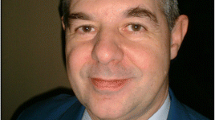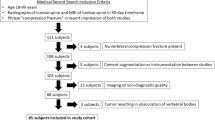Abstract
Study Design
Cross-sectional study.
Objective
To investigate the correlation between parameters extracted from a three-dimensional (3D) asymmetry analysis of the torso and the internal deformities of the spine presented on radiographs, including 1) curve number, direction and location; 2) location of the apical vertebra; and 3) curve severity.
Summary of Background Data
Surface topography (ST) is used to assess external torso deformities and may predict important characteristics of the underlying spinal curves. ST does not expose patients to radiation and could safely be used clinically for scoliosis patients. Most ST indices rely on anatomical landmarks on the torso and 2D measurements.
Methods
The ability of a 3D markerless asymmetry technique to predict radiographic characteristics was assessed for 100 scoliosis patients with full torso ST scans. Twenty-four additional patients were used for validation. The number, direction, and location of curves were determined by three examiners using ST deviation color maps. The inter-method percentage of agreement and Kappa coefficient were estimated for each measure. Linear regression predicted the vertical location of the apical vertebra from ST. Curve severity (mild, moderate, severe) was predicted with a decision tree analysis using ST parameters.
Results
The average percentage of agreement was 62%, 66%, and 23% for single, double, and triple curves, respectively. Curve direction was always correctly identified. The average percentages of agreement for curve location were 63%, 92%, and 62% for proximal thoracic, thoracic/thoracolumbar (T-TL), and lumbar (L) curves, respectively. Apical vertebra location was predicted with R = 0.89 for T-TL and R2 = 0.58 for L curves. ST parameters classified curve severity for T-TL and L curves with 73% and 59% accuracy, respectively.
Conclusions
The method presented here improves upon current ST techniques by using the entire torso surface and both a visual and quantitative representation of the asymmetry to better capture the torso deformity.
Similar content being viewed by others
References
Rogala EJ, Drummond DS, Gurr J. Scoliosis: Incidence and natural history. A prospective epidemiological study. J Bone Joint Surg 1978;60:173–6.
Robinson EF, Wade WD. Statistical assessment of two methods of measuring scoliosis before treatment. Can Med Assoc J 1983;129:839–41.
Kittleson AC, Lim LW. Measurement of scoliosis. Am J Roentgenol Radium Ther Nucl Med 1970;108:775–7.
Reamy BV, Slakey JB. Adolescent idiopathic scoliosis: review and current concepts. Am Fam Physician 2001;64:111–6.
Cobb RJ. Outline for the study of scoliosis. Instructional Course Lectures, American Academy of Orthopaedic Surgeons, 5. St Louis, MO: CV Mosby; 1948. p. 261–75.
Hill DL, Berg DC, Raso VJ, et al. Evaluation of a laser scanner for surface topography. Stud Health Technol Inform 2002;88:90–4.
Ardran GM, Coates R, Dickson RA, et al. Assessment of scoliosis in children: Low dose radiographic technique. Br J Radiol 1980;53:146–7.
Ronckers CM, Doody MM, Lonstein JE, et al. Multiple diagnostic X-rays for spine deformities and risk of breast cancer. Cancer Epidemiol Biomarkers Prev 2008;17:605–13.
Don S. Radiosensitivity of children: potential for overexposure in CR and DR and magnitude of doses in ordinary radiographic examinations. Pediatr Radiol 2004;34(Suppl 3):S167–72.
Doody MM, Lonstein JE, Stovall M, et al. Breast cancer mortality after diagnostic radiography: Findings from the U.S. scoliosis cohort study. Spine 2000;25:2052–63.
Hoffman DA, Lonstein JE, Morin MM, et al. Breast cancer in women with scoliosis exposed to multiple diagnostic x rays. J Natl Cancer Inst 1989;81:1307–12.
Goldberg CJ, Kaliszer M, Moore DP, et al. Surface topography, Cobb angles, and cosmetic change in scoliosis. Spine 2001;26:E55–63.
Pratt RK, Burwell RG, Cole AA, Webb JK. Patient and parental perception of adolescent idiopathic scoliosis before and after surgery in comparison with surface and radiographic measurements. Spine 2002;27:1543–50.
Ajemba PO, Durdle NG, Hill DL, Raso VJ. A torso-imaging system to quantify the deformity associated with scoliosis. Instrument Meas IEEE Trans 2007;56:1520–6.
Moreland MS, Pope MH, Wilder DG, et al. Moire fringe topography of the human body. Med Instrum 1981;15:129–32.
Thometz JG, Lamdan R, Liu XC, Lyon R. Relationship between Quantec measurement and Cobb angle in patients with idiopathic scoliosis. J Pediatr Orthop 2000;20:512–6.
Theologis TN, Fairbank JC, Turner-Smith AR, Pantazopoulos T. Early detection of progression in adolescent idiopathic scoliosis by measurement of changes in back shape with the integrated shape imaging system scanner. Spine 1997;22:1223–7.
Tredwell SJ, Bannon M. The use of the ISIS optical scanner in the management of the braced adolescent idiopathic scoliosis patient. Spine 1988;13:1104–5.
Turner-Smith AR, Harris JD, Houghton GR, Jefferson RJ. A method for analysis of back shape in scoliosis. J Biomech 1988;21:497–509.
Hackenberg L, Hierholzer E, Potzl W, Gotze C, Liljenqvist U. Raster-stereographic back shape analysis in idiopathic scoliosis after posterior correction and fusion. Clin Biomech 2003;18:883–9.
Jaremko JL, Poncet P, Ronsky J, et al. Estimation of spinal deformity in scoliosis from torso surface cross sections. Spine 2001;26:1583–91.
Pazos V, Cheriet F, Song L, Labelle H, Dansereau J. Accuracy assessment of human trunk surface 3D reconstructions from an optical digitising system. Med Biol Eng Comput 2005;43:11–5.
Ovadia D, Bar-On E, Fragniere B, et al. Radiation-free quantitative assessment of scoliosis: a multi center prospective study. Eur Spine J 2007;16:97–105.
Minguez MF, Buendia M, Cibrian RM, et al. Quantifier variables of the back surface deformity obtained with a noninvasive structured light method: evaluation of their usefulness in idiopathic scoliosis diagnosis. Eur Spine J 2007;16:73–82.
Stokes IA, Moreland MS. Concordance of back surface asymmetry and spine shape in idiopathic scoliosis. Spine 1989;14:73–8.
Suzuki N, Inami K, Ono T, Kohno K, Asher MA. Analysis of posterior trunk symmetry index (POTSI) in scoliosis. Part 1. Stud Health Technol Inform 1999;59:81–4.
Ajemba PO, Kumar A, Durdle NG, Raso VJ. Quantifying torso deformity in scoliosis. Medical Imaging 2006: Image Processing. Proceedings of the SPIE:6144:1608–1616.
Ajemba P, Durdle N, Hill D, Raso J. Classifying torso deformity in scoliosis using orthogonal maps of the torso. Med Biol Eng Comput 2007;45:575–84.
Komeili A, Westover L, Parent E, Moreau M, El-Rich M, Adeeb S. Surface topography asymmetry maps categorizing external deformity in scoliosis. Spine J 2014;14:973–83.
Ajemba PO, Durdle NG, Hill DL, Raso VJ. Validating an imaging and analysis system for assessing torso deformities. Comput Biol Med 2008;38:294–303.
Seoud L, Adankon MM, Labelle H, Dansereau J, Cheriet F Prediction of scoliosis curve type based on the analysis of trunk surface topography. Biomedical Imaging: From Nano to Macro, 2010 IEEE International Symposium on 2010:408–11, https://doi.org/10.1109/ISBI.2010.5490322
Scutt ND, Dangerfield PH, Dorgan JC. The relationship between surface and radiological deformity in adolescent idiopathic scoliosis: effect of change in body position. Eur Spine J 1996;5:85–90.
Lonstein J, Carlson J. The prediction of curve progression in untreated idiopathic scoliosis during growth. J Bone Joint Surg 1984;66:1061–71.
Peterson LE, Nachemson AL. Prediction of progression of the curve in girls who have adolescent idiopathic scoliosis of moderate severity. Logistic regression analysis based on data from the brace study of the scoliosis research society. J Bone Joint Surg Am 1995;77:823–7.
Duval-Beaupere G, Lamireau T Scoliosis at less than 30 degrees. Properties of the evolutivity (risk of progression). Spine 1985;10:421–4.
Author information
Authors and Affiliations
Corresponding author
Additional information
Author disclosures: AK (none); LW (none); ECP (grants from the Women and Children Health Research Institute [Stollery] and the Scoliosis Research Society, during the conduct of the study); ME (none); SA (grants from the Scoliosis Research Society and the Natural Sciences and Engineering Research Council of Canada, during the conduct of the study).
Rights and permissions
About this article
Cite this article
Komeili, A., Westover, L., Parent, E.C. et al. Correlation Between a Novel Surface Topography Asymmetry Analysis and Radiographic Data in Scoliosis. Spine Deform 3, 303–311 (2015). https://doi.org/10.1016/j.jspd.2015.02.002
Received:
Revised:
Accepted:
Published:
Issue Date:
DOI: https://doi.org/10.1016/j.jspd.2015.02.002




